“The oldest and strongest emotion of mankind is fear, and the oldest and strongest kind of fear is fear of the unknown”-H.P. Lovecraft
As the oceans make up 70% of the surface of the globe, millions of different species naturally call them home. And of that proportion, we have only fully examined 20%, leaving the remaining 80% untouched. Scary thought, isn't it? This means that there are a lot of species that humans are unaware of and have never encountered. Scientists continue to find new deep-sea species every year, with every discovery making the ocean appear more and more frightening. In other words, every time they discover a new deep-sea species I just have another justification for my Thalassophobia. If you don't believe me then scroll down, because I have compiled a list of 10 recently discovered sea creatures that will at least give you goosebumps just by looking at them. (I call this my top 10 reasons to hate the ocean)
1. Pineapple fish
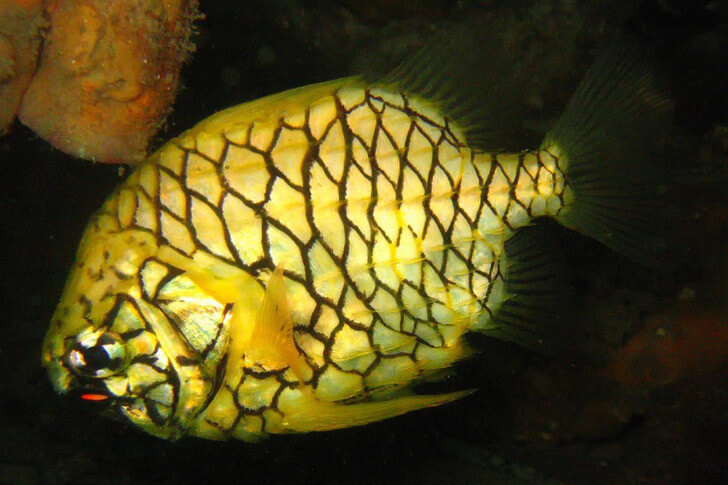 Source: Richard Ling
Source: Richard Ling
Let's start off the list nice and easy with something that doesn't look downright demonic.
This fish received its distinctive moniker as a result of the fish's color combination. One of the most amazing characteristics of this species is its ability to emit a green light from its mouth, which becomes red as the fish ages. While it occasionally ventures into farther offshore seas, it is most frequently seen on shallow coastal reefs. Once more, Australia is the primary habitat for this species.
2. Dumbo octopus
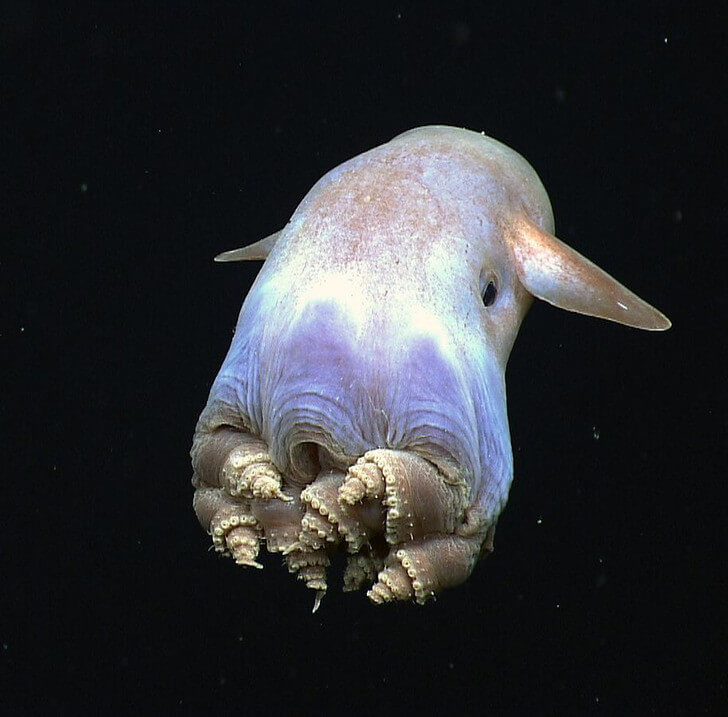 Source: NOAA Okeanos Explorer
Source: NOAA Okeanos Explorer
If you look at this
octopus's big ears, you can probably imagine how it acquired its name. As they may be found up to 13,000 feet below the surface, they are not frequently seen. Snails, worms, and other tiny invertebrates that dwell at the same depth make up their food. Its limbs are relatively small and webbed, which greatly aids in their ability to swim more quickly than a typical octopus.
3. A transparent creature
 Source: Trending and Viral News
Source: Trending and Viral News
Everyone was perplexed when a
video of someone carrying this translucent creature circulated online. The little creature was entirely transparent, and a light could pass right through it. Nobody could fully identify the species until an older, comparable video that showed a guy carrying a creature called
Cystisoma appeared. They dwell 600 to 1,000 meters beneath the surface of the ocean in low-light conditions.
Brace yourselves because from this point forward it gets weird, really weird.
4. Barreleye fish
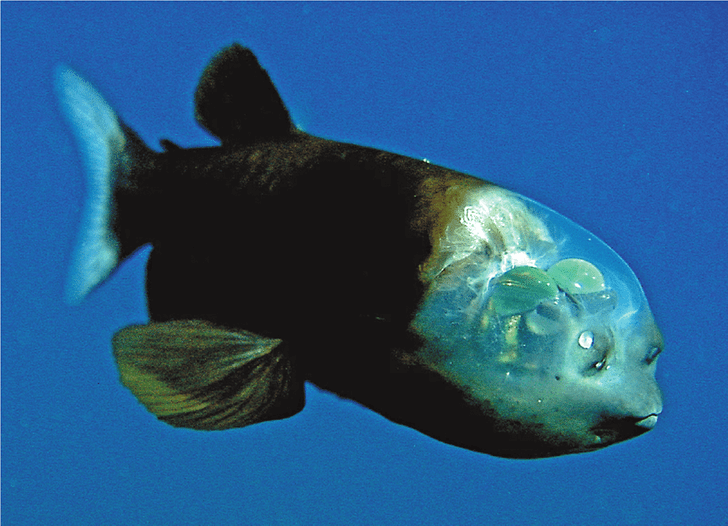 Source: Kim Reisenbichler
Source: Kim Reisenbichler
Next up we have something seriously creepy (Don't worry, this isn't even the end of it). The
fish's translucent dome on top of its head, through which two green orbs can be seen, is what makes it so special. It has peculiar eyes because it dwells in the ocean's twilight zone, when the natural light is fading. They can recognize the outlines of their prey and surprise them. It only measures 15 cm in length, and based on what researchers discovered in its stomach, it mostly consumes zooplankton.
5. Atlantic sturgeon
 Source: Assateague Island National Seashore
Source: Assateague Island National Seashore
This particular species of sturgeon is a member of the extinct
Acipenseridae family. The fact that this species possesses five rows of bone plates instead of scales is what makes it so fascinating. The purpose of these plates is to shield the animal from potential harm. And it's the reason why
this sturgeon, after washing up on the shore, wasn't instantly consumed by a swarm of birds.
6. Footballfish
 Source: KKPCW
Source: KKPCW
I love football and this monstrosity has nothing to do with it other than the name. The
fooballfish was originally identified in 1985 when deep-sea fisherman in California unintentionally snagged one. To assist them in luring and capturing their prey, they utilize the extension on their head in a manner similar to a fishing rod. It's noteworthy to note that footballfish females may grow up to ten times larger than male footballfish. As this fish lives between 2,000 and 3,300 feet beneath the surface of the water, where the food sources aren't particularly abundant, it consumes anything it can fit in its mouth.
7. Whatever did this to this poor tuna (Warning: trypophobic image)
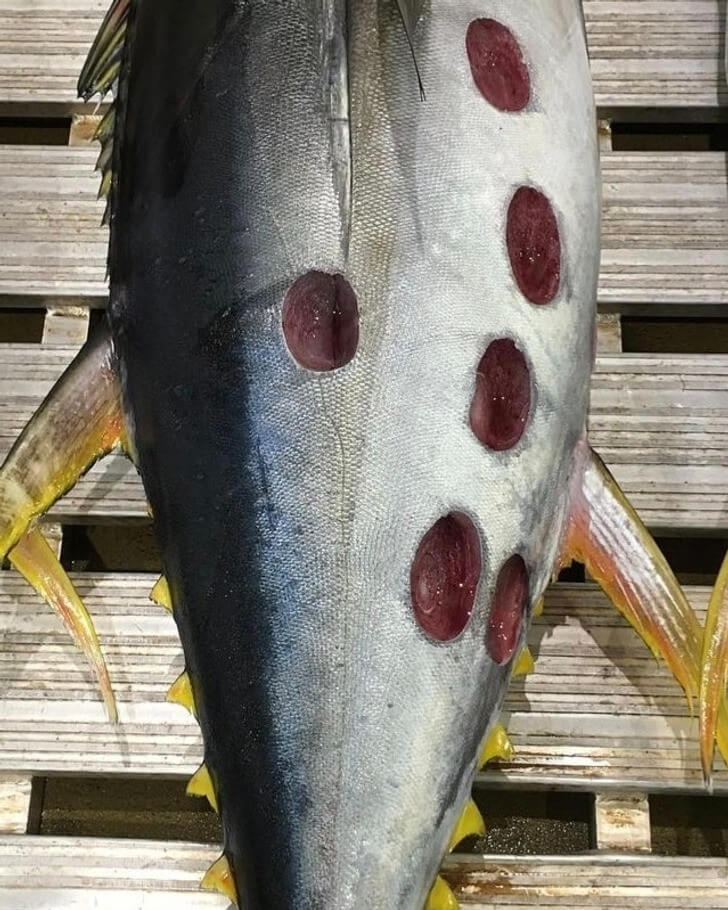 Source: Trapman Bermagui
Source: Trapman Bermagui
This
tuna was taken by a skilled fisherman, who afterward noticed several huge bite marks all over the creature. Because they were excessively rounded, several individuals immediately asserted that they couldn't be from another fish or shark. Trampman Bermagui, the person who caught the tuna, said that it was none other than the
Cookie-cutter shark that was responsible for their creation. This particular shark kills none of its food despite taking huge bites from it (Ouch). What a sadistic creature, I'd rather not ever swim again than face this thing.
8. Deep sea shark
 Source: Trapman Bermagui
Source: Trapman Bermagui
Those eyes convey a thousand messages, and none of them is good-willed. This 650-meter-deep rough-skinned shark was further found by Trapman Bermagui (who should have left it where it belongs). The Australian guy clarified that it wasn't a cookie-cutter shark, despite the fact that many people thought it was. He claimed that they caught this shark, also referred to as an endeavor dog shark, in the winter.
9. Pacific viperfish
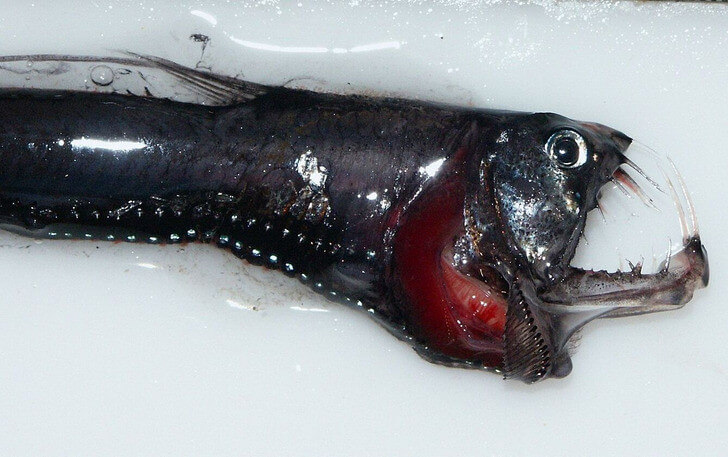 Source: David Csepp
Source: David Csepp
This species, also known as
Sloane's viperfish, may be identified by its long, fang-like teeth. It was originally a dark silver-blue tint, and there are hexagonal-shaped pigmented patches all over the sides. It spends the day living between 500 and 2,500 meters below the surface, but at night it moves to shallower waters, less than 600 meters. It is mostly found in Australia and relies on eating smaller fish to stay alive.
10. Atolla jellyfish
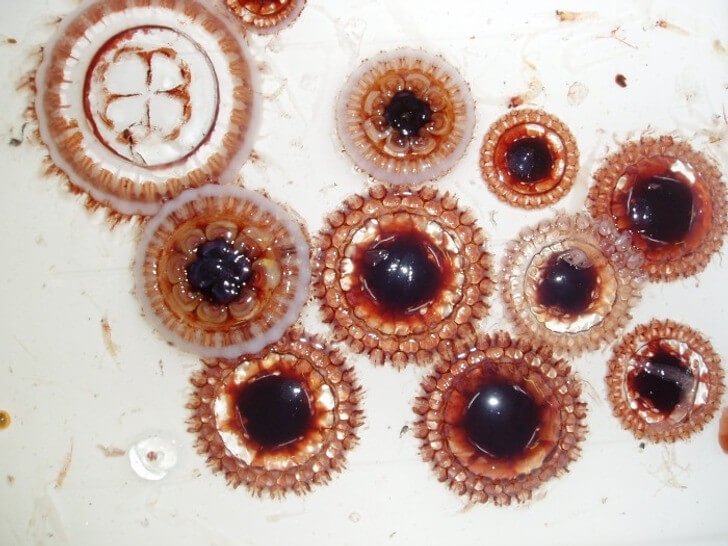 Source: Siegel, Volker
Source: Siegel, Volker
This is where I lost it. This thing came from a biblical hell and I won't be convinced otherwise. This jellyfish, often referred to as a
crown jelly, is regarded as the head of the entire family. This is due to the way it appears to have a little crown on its head. It is also simple to identify due to its red hue, which isn't noticeable in deep waters without light. It can actually hide from predators at depths of over 1,000 meters since it seems absolutely black there.
Congratulations, you made it through the list. Are you now convinced that we should never have found these deep sea creatures in the first place? Nevertheless, I might make another list when we discover some more sea-dwelling abominations, so stay tuned.
Please consider pressing Like and sharing the article if you find it interesting. Follow our website for more animal news like this.
 Source: Richard Ling
Source: Richard Ling Source: NOAA Okeanos Explorer
Source: NOAA Okeanos Explorer Source: Trending and Viral News
Source: Trending and Viral News  Source: Kim Reisenbichler
Source: Kim Reisenbichler Source: Assateague Island National Seashore
Source: Assateague Island National Seashore Source: KKPCW
Source: KKPCW Source: Trapman Bermagui
Source: Trapman Bermagui Source: Trapman Bermagui
Source: Trapman Bermagui Source: David Csepp
Source: David Csepp Source: Siegel, Volker
Source: Siegel, Volker